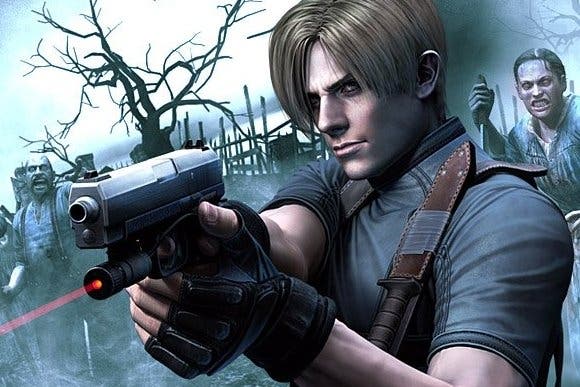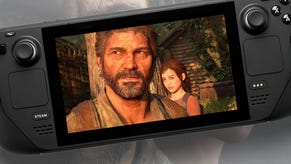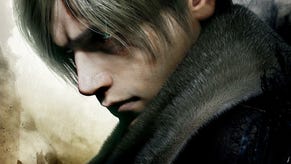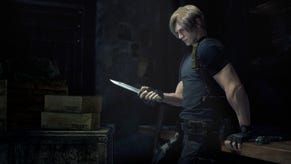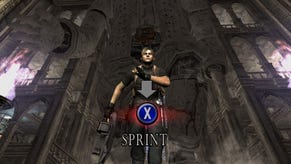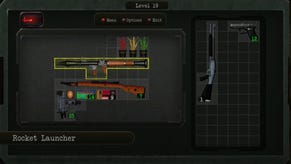Yasuhisa Kawamura and the Resident Evil that never was
Meet the man who tried to make Capcom's survival horror even scarier, and failed.
Very much like the shambling, slack-jawed corpses that stalk its instalments, Capcom's Resident Evil series is a curiously aimless beast at present. 2012's Resident Evil 6 deviated too far from the core values of the franchise by trying to appeal to horror and action fans alike, and Capcom has since fallen back on former glories by remastering the GameCube remake of the 1996 debut title for modern consoles. Meanwhile, Resident Evil: Revelations 2 skulks almost apologetically in the shadows, hoping to offer a spin-off romp which will maintain the interest of an increasingly restless fan base until the next numbered entry in the lineage hoves into view.
Resident Evil has been here before, though, and keen gaming historians will gleefully point out that such dire situations have a habit of breeding truly remarkable video games. When Capcom last found itself at similarly awkward crossroads, it pulled the sublime Resident Evil 4 out of the bag - arguably the crowning glory of the series thus far. Skilfully helmed by series creator Shinji Mikami and boasting revised controls, a new over-the-shoulder perspective and an entirely fresh enemy to be scared witless by, the 2005 GameCube classic is unquestionably one of the finest video games of its era, and it is from this memorable zenith that the franchise has since been charting its slow and agonising descent. Every game since has been cast in Resident Evil 4's shadow.
However, as perfectly-realised an experience as it unquestionably was, Resident Evil 4 could almost have been even more revolutionary. Speaking to Eurogamer, former Capcom scenario writer Yasuhisa Kawamura reveals that it had been his intention to craft a horror title which raised the bar when it came to scares; his vision was one of "pure horror" freed from the constraints of the increasingly convoluted Resident Evil storyline, which has traditionally relied so heavily on shadowy corporations indulging in illegal scientific experiments.
Ultimately, Kawamura's efforts would be in vain; his innovative vision for Resident Evil 4 - often referred to as "Hook Man" or "Phantom" due to the unsettling appearance of the game's main antagonist - never made it past the prototype stage, with Mikami's version being the one which, after much reworking, eventually made it to market almost a decade ago.
Despite having spent to much of his career crafting horror, Kawamura is easily startled. "Personally, I can not stand horror," he reveals. "I can't stand scary movies. But because of that it's fun for me to create horror." Kawamura's background is in storytelling and he fostered his talent for spinning a tale by working with manga artists in his formative years. "When I was 19, I was under an apprenticeship of manga illustrator Yukito Kishiro," he says. "At the time he just debuted his series Gunnm, which is known as Battle Angel Alita in the west." Kawamura would spend two years under Yukito's guidance, eventually creating his own novelised version of Gunnm. It was not a hit, and prior to joining Capcom's ranks, he was making ends meet by working at a Tokyo gas company.
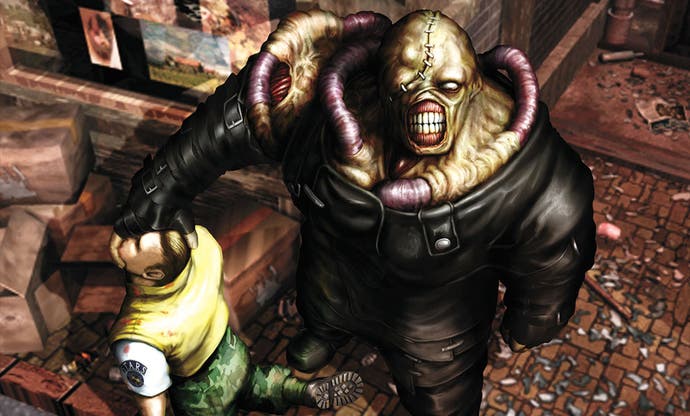
It would be Kawamura's elder sibling who made that vital connection, pulling the storyteller into the fascinating arena of interactive entertainment when he spotted Capcom hiring ad for the next Biohazard - the Japanese moniker of the Resident Evil franchise - in one of his magazines. Brimming with ideas and with his judgement possibly clouded by youthful naivety, Kawamura admits that his initial interview didn't go entirely according to plan. "There was Shinji Mikami, George Kamitani, Hiroki Katou and Kazuhiro Aoyama. Looking back now, I realized I was very unprofessional back then. They first asked me what kind of Biohazard game I wanted to make. I said 'I want to make Exorcist-themed Biohazard game, or Yakuza-themed Biohazard with Katana Swords!' Then Mikami asked me about a martial arts magazine I brought into interview, which I purchased on my way there. I later found out that he did Chinese Kempo during his college years. I looked back at how I behaved after my interview, and I assumed that I was disqualified. Later I found out I was offered the position."
After cutting his teeth on the PlayStation title Dino Crisis - he was brought in by Mikami to fix issues he had with the script - Kawamura was placed within what was internally known as the Biohazard "spin-off" team, charged with expanding the scope of the series by creating side-stories set in the same fictional universe. Despite the high profile of the franchise, the Biohazard production team had experienced several staff departures, and Kawamura was therefore unceremoniously thrown in at the deep end. "Although I never had any experience of creating video games or creating scenarios, Mikami told everyone that I could write," he explains. "I was shocked at first, but I understood that he couldn't find any alternative. Since so many people quit, they didn't have planners or artists for the team."
Kawamura quickly had to familiarise himself with the source material, as he had only experienced the second title at this point. "I played a copy of the original Biohazard that was provided by the studio, and finished the game with the help of the complete guide, fan websites, and secondary sources available to me at the time. I needed to understand Biohazard immediately. I also had to force myself to learn how to write scenarios and documents all on my own." It was a baptism of fire in every sense, and one which was made all the more fiery by the high expectations Capcom had for all Resident Evil releases, spin-off or otherwise.
Following the success of the first two games the series had blossomed into one of the company's tentpole franchises, and Capcom was understandably keen to maintain momentum. The result was multiple projects being developed in tandem, all by different teams. "The main title was Biohazard 3 for the original PlayStation, with Hideki Kamiya as director," confirms Kawamura. "Our project was at that time called Biohazard 1.5, because it was set between 1 and 2." With so many plates spinning in the air, it comes as no surprise to learn that the announcement of the PlayStation 2 threw Capcom's carefully-laid plans into disarray. "Out of all of the current projects, Kamiya's Biohazard 3 was the major one and it was presumed that more time would be needed to complete it," Kawamura says. "Eventually, Biohazard 3 was renamed Biohazard 4 - intended for the PlayStation 2 - while our spin-off Biohazard 1.5 project effectively filled the gap as the new Biohazard 3. However, we did not get to lengthen our schedule."
What was supposed to be a side-story had now become a part of the main Resident Evil series, and with this sudden elevation came a serious amount of work; the team put in so many hours that some of their wives even went as far as to file missing person reports. It was in this challenging environment that Kawamura came up with some of his most enduring ideas. "I created the whole gimmick for the boss stages in Biohazard 3, and the idea of the 'Live Selection' choices. I also designed the Mercenaries mini-game, which is based on my favourite film, Running Man, featuring Arnold Schwarzenegger." Kawamura also had a lot of input into the creation of the iconic Nemesis character, arguably one of the most memorable aspects of the entire game.
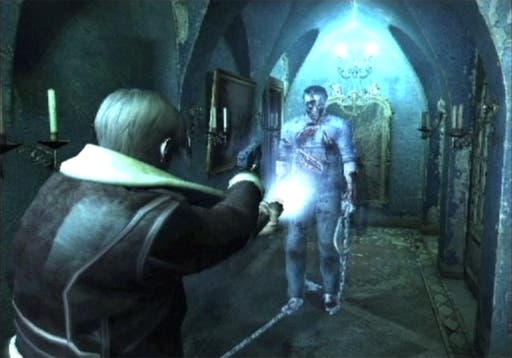
Resident Evil 3: Nemesis - known in Japan as Biohazard 3: Last Escape - launched in 1999 to positive reviews and encouraging sales, although it didn't perform as well as its forerunner in purely commercial terms. Elsewhere, things were even more worrying. Largely given a free reign on Resident Evil 4, Kamiya's ambitious plans for the game were causing problems; the maverick designer wanted to create a title imbued with a sense of action and style rather than horror and suspense. "Mikami told Kamiya to do as he wanted, so he did," explains Kawamura. "It ended up being nothing like a Biohazard game at all." This radical reimagining of the Resident Evil concept did not go down well with those in charge. "Mikami and Yoshiki Okamoto were angry about it at first, but we couldn't afford to scrap the project - that's how Devil May Cry came to be," Kawamura continues. He would serve as Support Planner on that particular title, and despite enjoying an uneven relationship with its director, maintains that he has a great deal of respect for his skill. "Kamiya drives himself purely on talent. We weren't always on good terms, but I have to admit that his works are amazing." Kamiya's switch from Resident Evil to Devil May Cry - which launched in 2000 - left the production of the fourth game in complete disarray. Mikami gave Hiroshi Shibata - then director of the title - the chance to totally reboot development, and this opened the door for Kawamura, who had found an ally who shared his unique vision. He was now in a prime position to fix what he saw as the major issue with the franchise.
"I have always thought that Biohazard has one problem regarding the horror aspect," he explains. "For me, a person feels afraid when they are in unknown territory which they are unable to comprehend and unable to predict. The first game had all the necessary points. Special Forces - excellent in combat but still human - locked up in a unknown manor full of monsters, zombies and mutants. Because the environment and difficulty of the game were synchronised, many players felt some kind of fear. However, halfway through the game, players understand the source of fear, and understand how to cope with the monsters. Eventually, the protagonists win the battle and escape. So, in retrospect, by the end of first game, all of the mystery that creates horror has been revealed. All that is left is powerful monsters and difficult traps; there was nothing to scare the players."
Resident Evil 2 countered this issue by ratcheting up the action and pushing human drama to the forefront - a tactic which Kawamura compares with big-budget Hollywood sequels like Aliens and Terminator 2: Judgment Day, both of which overcame the tricky task of following critically-acclaimed, trailblazing hits. "For Biohazard 3, I wanted to explore new ways to bring horror by creating the Nemesis and using randomised, spawning zombies," says Kawamura. "This was originally supposed to be a spin-off, so I was thinking differently. I felt the 'horror' portion of the Biohazard series was stuck in a rut. Biohazard's mystery is dependent upon science and forensic fiction, and that challenges humans to understand the concept fully." In short, with each sequel a little bit of the mystery was being eroded, and with it the potential to scare players.
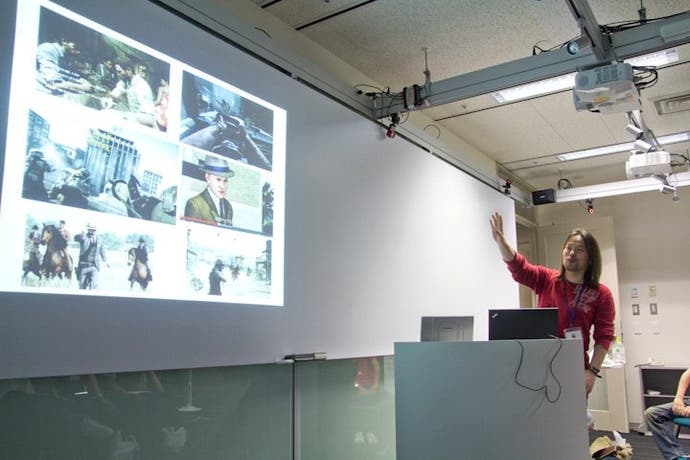
While Kawamura was mulling over this problem, a rival series had already begun to grow in popularity and would have a profound impact on Kawamura's thinking: Konami's Silent Hill. "When I was working with Yukito Kishiro, he recommended me a movie called Jacob's Ladder by Adrian Lyne. I was shocked by the contents. Kishiro and I discussed the movie all day. After I created Biohazard 3 I heard about Silent Hill for the first time; it had significant connections with Jacob's Ladder. Silent Hill's notion of horror was based on hallucinations and ghosts. There's no explanation behind these things; this concept on its own would forever be unknown territory - unable to comprehend and unable to predict."
This uncertainty represented a key ingredient which, in Kawamura's mind, was becoming increasingly absent from Capcom's series - which always went to great pains to explain what was happening, and why. "While playing Biohazard, you see a shadow behind a window," replies Kawamura when pressed for an example. "That is actually some sort of prop, and later in the game the protagonist would encounter and obtain the prop. Like zombie dogs breaking through glass to attack the player, there's a reason behind every event. However, in Silent Hill, you see ghosts of children in a school area. A locker rattles. You assume there's something behind it and follow the ghost or open the locker, but there's nothing. There's no reason necessary for ghosts and hallucinations. That was impossible in Biohazard."
Being given a degree of control over Resident Evil 4 offered Kawamura the chance to inject this vital missing element into the franchise. He quickly began to petition director Shibata with his ideas. "Shibata was very invested in the project," he says. "I told him if we want to pursue pure horror, we need to find an unexplainable concept. Let's create a setting that doesn't revolve around science or reason." It was from this notion that the "Hook Man" version of Resident Evil 4 - also known as "Hallucination Biohazard 4" - began.
Kawamura also had some pretty radical ideas when it came to visualising a new Resident Evil, and took inspiration from another unlikely Hollywood source. "I gathered the staff in the conference room and showed one scene from the movie Lost Souls," he recalls. "It's where the protagonist - played by Winona Ryder - gets dragged into another world from a restroom. This movie is not acclaimed by critics, but I found their bleach bypass skills and special effects rather striking. So I came up with the idea of Leon getting infected by a mysterious virus, and suffering from his own hallucination. There wasn't any solid story behind it - we just made something up to test the horror aspect. But when we started the experiment, we ran into several problems."
By this point Capcom had inked a deal with Nintendo to produce a series of games exclusively for the company's GameCube console, with Resident Evil 4 jumping over from the PlayStation 2 to become perhaps the most high-profile member of the bunch. The "Hook Man" version of the game would be demonstrated at E3 2003 by Mikami himself, and would showcase Resident Evil 2's Leon Kennedy as the main character. However, as exciting and interesting as this version of the game appears to be, it would ultimately prove to be a design dead end - much to Kawamura's shame.
The GameCube may have offered fresh, powerful hardware but the team encountered crippling limitations which curtailed some of the title's more creative concepts. "You were not supposed to know when Leon's hallucination would happen," explains Kawamura. "Various hidden checkpoints would trigger Leon's fear into hallucination. Depending on player's behaviour, the structure of stage changed, so we had to create two types of 3D models. That doubles the amount of cost when it comes to design and rendering. Even if we did have the budget, it was almost impossible to cram all of that into the GameCube's memory. We couldn't even add any monsters."
In an effort to solve this egregious problem, the team pondered the outlandish idea of limiting the game to a single enemy, but this was quickly discarded as it wouldn't allow for an experience of any considerable length. "Another problem was all my fault; I didn't know how to stage a balanced yet varied horror performance," laments Kawamura. "Even if it were possible for a game to create a hallucinogenic atmosphere, if the horror trigger isn't scary for the player, it's over. I felt ashamed for putting the other staff through this. It was disappointing and discouraging. I still think that the idea was brilliant, but I didn't have enough skill or guts to put the plan into action. I don't know if I could done anything to prevent that occurrence. I just wanted to make a scary Biohazard game." When it became clear that Kawamura and Shibata's Resident Evil 4 wasn't progressing as expected, Mikami was forced to step in and take control of the project - eventually creating the classic that we know and hold dear today.
Kawamura's failure to successfully reboot the Resident Evil series and create a genuinely scary game might have left him bitter or resentful of the man who had to relinquish him of his duties. However, that simply isn't the case. "I can attest that Mikami is very patient, and has a great work ethic," he says. "I learned narrative game design from Mikami. Biohazard is outstanding in narrative when compared to other games. I respect Mikami as a work partner and director."
Since his time on Biohazard, Kawamura's career has taken him in many directions, including the Capcom offshoot Clover Studio. He would also become involved with UTV Ignition's excellent El Shaddai: Ascension of the Metatron, before Sega's Kinect-powered Resident Evil wannabe, Rise of Nightmares, would place him in more familiar territory. "Every time I am appointed a job, I tell my agent that my priority is zombie horror games," he says with a smile. "If someone is developing a zombie-themed work, I can give them a cheaper offer. Rise of Nightmares was recommended because I kept saying that. I was a big fan of Sega so I was ecstatic when I first heard the news."
In the years since leaving Capcom Kawamura has built up an enviable body of work and is better equipped to understand what makes "pure horror" work than ever before - which leads us neatly back to Resident Evil's current funk. "I occasionally lecture about game development in Japan, and I often talk about the lessons that Mikami's Biohazard taught me," he explains. "I think it's wrong to think zombies in games are mere obstacles and enemies. Zombies are part of the environment. It's a decoration that creates the dystopian environment, and the biggest obstacle that players have to face is their own psychological mind. Unless there's a legitimate reason for zombies running and shooting guns, it kind of spoils the fun. How about putting more time in developing the survivor's mind?"
However, Kawamura stops short of totally writing off the series in its current state. "I have to disagree that the Biohazard 6, that sold 3.5 million, was not popular at all," he says. "The development team was my former colleagues and even though we have some artistic differences, they did a great job. However, I can understand the concern the fans have about the recent Biohazard series. This is similar to what most Hollywood movies go through; the story is about strong, unbeatable protagonists defeating the bad guys against all odds. However, the old fans must want something where protagonist is almost helpless, and is forced to move around in a desperate situation. You can see a similar dilemma for the Alien movie series; each time Ripley comes out alive, she'll be a more capable opponent. In order to give Ripley the conflict they need, they need a more powerful alien and a larger threat. This is not good or bad; it just tells us that stories grow over time."
Resident Evil 3: Nemesis remains the title with which has the strongest connection for Kawamura, and he considers the time he spent on it to be the highlight of his career - a career which continues to evolve even today, and has seen him work with the likes of Sony, Konami and Square Enix, as well as the late Battle Royale director Kinji Fukasaku on the cutscenes for the PlayStation 2 title Clock Tower 3 - one of his personal heroes and a legend in Japan. More recently, he reunited with former Capcom Director Yoshiki Okamoto to work on Monster Strike, a smartphone game which has recently unseated Puzzle & Dragons to become Japan's most popular mobile title.

Despite this varied career, does Kawamura believe that his path could somehow cross with Capcom once again? "I could never turn down such an offer," he replies. "I am very fond of Biohazard. To be honest, I would love to remake Biohazard 3 with today's technology and skills. However Capcom would never try that, and I am not that much of a valuable member to Capcom. The Biohazard series is created by Capcom's most elite members. It's hard to imagine myself fitting in with such a prestigious team. Even if I were to successfully work on a Biohazard 3 remake, there's already Operation Racoon City and The Umbrella Chronicles. I doubt I have any chance."
Even so, there are always opportunities in the video game industry. Ironically, Kawamura is now on friendly terms with the man he effectively replaced, Resident Evil 1 scribe Kenichi Iwao. "I was picked up by Capcom due to Iwao leaving the team," he explains. "We recently made time for each other to catch up, and eventually became friends. Iwao also became a mentor for the video game student workshop that I've been running for 4 years." The notion of two writers who have contributed so much to the core Resident Evil mythos working together is a tantalising one, but Kawamura reveals that there are no plans for any collaboration - at least not at present. "Iwao has been in this industry for longer than I have," he adds. "He is a very skilled designer. He has created masterpieces such as Biohazard 1 and Final Fantasy 11. We may work on something together in the future."
In more recent years Kawamura has been putting his industry experience to good use by holding lectures around Japan and mentoring future game developers, planners and writers. His most recent lecture is primarily concerned with narrative in video games, and how Japan has been surpassed by the west when it comes to creating deep and meaningful story-driven gaming experiences. "In 2008 I got to hear Mr. Kenneth Levine's talk at The Game Developer's Conference," he says. "That was the first time I heard about narrative in games. It was very difficult to comprehend narrative in Japanese."
Lectures aside, Kawamura refuses to give up on his plan to create the perfect survival horror title, but readily admits that putting ideas into production is proving a little more difficult. "I don't have any money or development studio that I can rent," he says sadly. "Even to make a studio, I need an investor who likes my motive. I think I'm not cut out to be both president of the company and game developer. I thought starting a Kickstarter would help, but I felt building a company in United States or opening a bank account is very difficult for me. But I will not give up. I want to make this dream come true." Based almost solely on that short but electrifying Hook Man demonstration, there will surely be a great many Resident Evil fans sharing that wish.
Thanks to Miya Graves for her invaluable assistance with translation. Thanks also to Joel Welsh and John Szczepaniak, without whom this feature simply would not have been possible.
